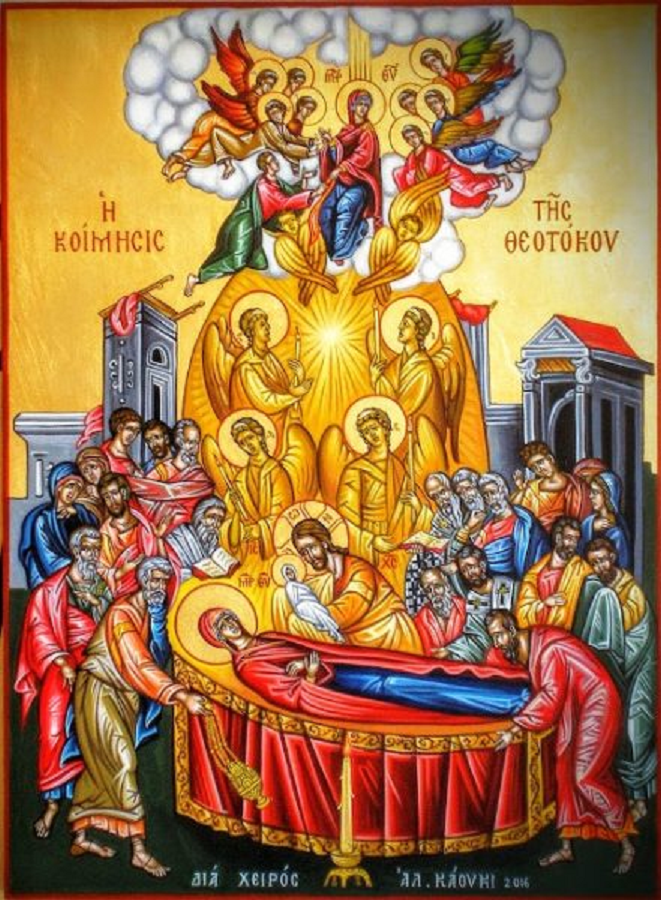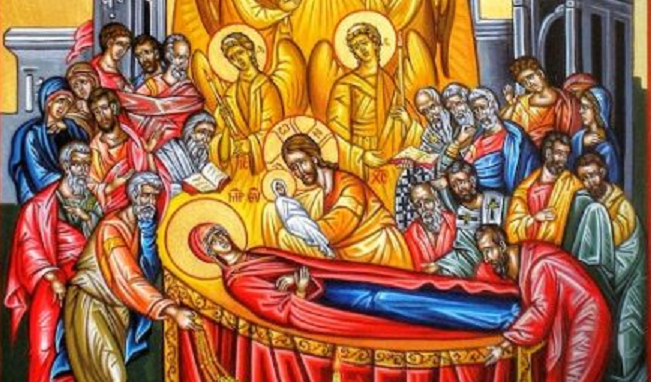Don’t Dive in Shallow Water

Imagine that the Scriptures are a body of water. For some people, they are just fancy old stories. It’s as though they were in a tidal pool, standing in water up to their ankles and seeing everything going on beneath the surface. But consider this: there were innumerable spiritual writings produced from the time of King David—when writing was first introduced to the Hebrews—until now. Only some of them have been recognized as the Word of God. Why? There are two reasons: first, the community of believers recognized in these writings their own spiritual experience; second, they realized that certain writings had infinite depth. Every generation found in them new and relevant meanings. All Scripture is prophetic. That means that, beyond the obvious, there are deeper meanings that are continually being revealed. It’s like looking down on the ocean. It’s possible to see some things that are close to the surface but to experience the reality of the sea, you have to go deeper. If you take a leap off a high diving board into a tidal pool, you’re going to get hurt. If you dive into the ocean, go as deeply as you want, you’ll not hit the bottom. So, let’s dive.
Do you remember that on the Solemnity of the Ascension of Our Lord, we sort of made fun of the “divine elevator”? Here, on the Solemnity of the Assumption of the Blessed Virgin Mary, the divine elevator makes its reappearance. The doctrine of the Assumption teaches that Mary was assumed into heaven, body and soul. The difference between Christ’s Ascension and Mary’s Assumption is that Christ did it on his own power; Mary needed help. Am I making fun again? A little bit. That’s what happens when you take a high dive into a tidal pool.
Let’s take a look at the first reading chosen for today’s liturgy. It begins with King David welcoming the Ark of the Covenant into the tent which he had prepared for it. What was the Ark of the Covenant, anyway? We know it was a large box made of acacia wood and covered inside and out with gold. It had a lid called the “Mercy Seat” where two golden statues of six-winged cherubim stood facing one another with their wings overshadowing it. That was where the Glory of Yahweh would manifest itself. The cherubim were fierce guardian creatures, and nothing like the cherubs we see in paintings.
All that is not what was so important about the ark, though. What mattered was what was inside: the stone tablets of the Law (the Torah). We’ve talked about the tablets of the Law before. They contained the stipulations of the covenant between Yahweh and God’s people.
In Hebrew, the word דבר (dabar) means both a word and a thing. If you know a thing’s דבר (dabar), you know its essence and can exercise power over it. When Genesis [2:19] says God sent the animals to the man to see what he would name them, it was an expression of humanity’s dominion over other living beings. By naming them, they were tamed. And that’s why, when God gave his name—Yahweh—to Moses [Exodus 3:14], it was so important. God allowed humanity access to himself—to his Essence.
In the ark were the stone tablets inscribed with the sacred דבר (dabar) of the Covenant. Just as our marriage covenant requires witnesses, so, the stone tablets were witnesses to the Covenant against those who would break it. God’s relationship with his people—his Covenant—was enshrined in the ark. Therefore the Word of God, the ךבר-יהוה (Dabar-Yahweh), God’s Presence itself, inhabited the ark.
Why do you think we’re talking about the Ark of the Covenant on the Solemnity of the Assumption of Mary? Can you see the parallel? The Word of God—the ךבר-יהוה (Dabar-Yahweh)—took flesh in the womb of the Virgin Mary. In that sense, Mary is herself the Ark of the New Covenant. The Covenant in Christ’s blood.
In the first chapter of Saint Luke’s gospel, he writes that the angel tells Mary that “the power of the Most High will overshadow you.” That word, “overshadow,” is the word used in the book of Exodus [25:20] to describe how the wings of the Cherubim were to overshadow the lid of the ark. It’s repeated in the letter to the Hebrews [9:5], when the author describes what the Ark of the Covenant was like. Because Mary bore the Savior, the Scriptures draw a clear connection between her and the Ark of the Covenant.
So, what about the Assumption of Mary? We don’t need to look for a divine elevator. All we need do is look at the Nicene Creed that we’ll be professing shortly. We say, “We look for the resurrection of the dead, and the life of the world to come.” Are we talking about a physical body? Yes, and no. After his resurrection, Jesus appeared to his disciples in a body. He had them touch the wounds of the crucifixion in his hands and side. He ate a piece of fish. Yet, his body wasn’t exactly like what it was before the Resurrection. He appeared in and disappeared from locked rooms. In his first letter to the Corinthians [15:44], Saint Paul talks about a “spiritual body,” free from corruption. Likewise, the first letter of Saint John [3:2], he says, “What we shall be like later has not yet come to light. We know that when it does come to light, we shall be like him.”
So, what happened to Mary’s dead body? Wrong question! All that the Assumption of Mary means is that she, the Ark of the New Covenant, the vessel of the Presence of God-with-us, shares in her son’s resurrection—which is the hope of us all. Mary was assumed into heaven. Where is heaven, after all? It certainly is not anywhere up there. Heaven is a spiritual reality. It’s the reality of living in the Presence of God and possessing the Presence of God alive within us. Mary didn’t have to wait for her death to experience heaven. She was overshadowed by the Power of the Most High, and conceived the eternal Word, the ךבר-יהוה (Dabar-Yahweh).
What, then can we say about the Assumption of Mary? It’s both a statement of faith in the Resurrection and a promise of our share in it. We can rejoice in the Assumption not only because God’s promise was fulfilled in and through Mary, but also because our faith provides us with the hope that the same promise is being fulfilled in us now and at the hour of our death. Amen.
